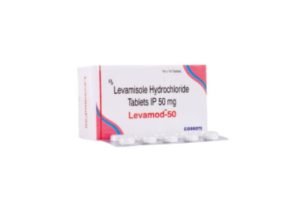
Here is a comprehensive review of Ampicillin + Probenecid, focusing on their combination use:
Description:
Ampicillin is a broad-spectrum penicillin antibiotic that inhibits bacterial cell wall synthesis, killing a range of Gram-positive and Gram-negative bacteria. Probenecid is a uricosuric agent primarily used to treat gout by increasing uric acid excretion. In combination with antibiotics like Ampicillin, Probenecid prolongs the antibiotic’s half-life by inhibiting its renal excretion, leading to higher and more sustained blood levels of Ampicillin.
Combination Use:
- Ampicillin + Probenecid is used when it is desirable to prolong the duration of Ampicillin’s therapeutic effect, such as in the treatment of:
- Severe bacterial infections: Where maintaining high blood levels of Ampicillin over a longer period is beneficial.
- Syphilis: To sustain adequate antibiotic levels.
- Neisseria gonorrhoeae infections.
- Meningitis: Where continuous therapeutic levels are needed to cross the blood-brain barrier effectively.
Mechanism of Action:
- Ampicillin: Works by binding to penicillin-binding proteins in bacteria, disrupting the formation of the bacterial cell wall and leading to cell death.
- Probenecid: Inhibits the renal tubular secretion of Ampicillin, reducing its excretion from the kidneys, thus increasing its concentration and duration of action in the bloodstream.
Brand Names:
This combination is not typically marketed as a fixed-dose product, but the two drugs are often prescribed together in clinical practice. Commonly available Ampicillin and Probenecid products include:
- Ampicillin:
- Principen, Omnipen, Totacillin.
- Probenecid:
- Benemid, Probalan.
Available Forms & Strengths:
- Ampicillin:
- Capsules: 250 mg, 500 mg.
- Oral suspension: 125 mg/5 mL, 250 mg/5 mL.
- Injection (IV/IM): 250 mg, 500 mg, 1 g, 2 g.
- Probenecid:
- Tablets: 500 mg.
Uses:
- Bacterial Meningitis: Caused by susceptible organisms, often where continuous therapeutic levels of Ampicillin are required.
- Syphilis: In particular cases, Ampicillin may be used alongside Probenecid to ensure sustained antibiotic levels in blood and tissues.
- Respiratory Tract Infections: Where prolonged antibiotic activity is needed, such as pneumonia.
- Gonorrhea: Ampicillin was historically used in treating gonococcal infections, often in combination with Probenecid to enhance its efficacy.
- UTIs (Urinary Tract Infections): Occasionally used for complicated or recurrent infections, where maintaining prolonged therapeutic levels of Ampicillin is crucial.
Side Effects:
- Ampicillin:
- Gastrointestinal: Nausea, vomiting, diarrhea, and abdominal pain.
- Allergic Reactions: Rash, hives, anaphylaxis (rare but serious).
- Superinfections: Such as Clostridium difficile-associated diarrhea.
- Probenecid:
- Gastrointestinal: Nausea, vomiting, anorexia.
- Hypersensitivity Reactions: Rash, fever.
- Renal Issues: Precipitation of uric acid crystals can occur, leading to kidney stones in patients with gout.
- Blood Disorders: Rarely, can cause anemia, leukopenia (low white blood cell count), or hemolytic anemia.
Dose:
- Ampicillin:
- Typical doses for most infections: 250-500 mg every 6 hours, or higher for more severe infections.
- In severe cases like meningitis: 1-2 g IV every 4-6 hours.
- Probenecid:
- 500 mg orally taken at the same time as Ampicillin and repeated as necessary (usually every 6-8 hours) to maintain prolonged Ampicillin blood levels.
Contraindications:
- Ampicillin:
- Hypersensitivity to Ampicillin or other beta-lactam antibiotics.
- Probenecid:
- Kidney stones or history of uric acid nephrolithiasis.
- Severe kidney disease.
- Hypersensitivity to Probenecid.
Drug Interactions:
- Ampicillin:
- May reduce the effectiveness of oral contraceptives.
- Increased risk of skin rash when used with Allopurinol.
- Probenecid:
- Aspirin and other salicylates may reduce its effectiveness.
- Probenecid interacts with other drugs metabolized or excreted by the kidneys (e.g., methotrexate, indomethacin).
Warnings:
- Ampicillin:
- Allergic Reactions: Patients with a history of beta-lactam allergies may be at risk for severe allergic reactions.
- Superinfections: Prolonged use can lead to overgrowth of resistant organisms.
- Probenecid:
- Gout: Probenecid should be used cautiously in individuals with a history of gout since it can exacerbate acute attacks.
Special Considerations:
- Pregnancy: Both Ampicillin and Probenecid are generally considered safe during pregnancy. Ampicillin is classified as Category B, while Probenecid is also considered safe under healthcare supervision.
- Breastfeeding: Ampicillin is excreted in small amounts in breast milk but is generally considered safe. Probenecid also passes into breast milk in small amounts, and caution should be exercised.
- Pediatric Use: Ampicillin + Probenecid can be used in children, but doses must be adjusted according to body weight.
Doctor Advised:
- Patients must inform their doctor about any known allergies to penicillin or other beta-lactam antibiotics.
- Ampicillin + Probenecid should be taken exactly as prescribed, particularly in prolonged treatment regimens.
- The combination is especially useful in serious bacterial infections where maintaining high antibiotic levels is critical.
Conclusion:
Ampicillin + Probenecid is a clinically significant combination used to enhance the efficacy of Ampicillin by prolonging its action. This combination is particularly helpful in treating severe or hard-to-reach infections, such as bacterial meningitis and syphilis. Probenecid’s role in reducing the renal excretion of Ampicillin allows for higher and longer-lasting levels of the antibiotic, making it a valuable tool in certain infections. However, careful consideration of allergies, kidney function, and other drug interactions is crucial for safe use.







